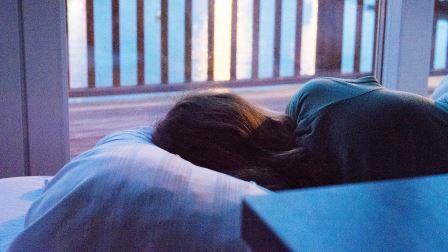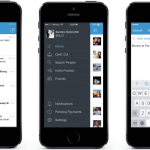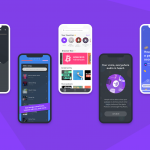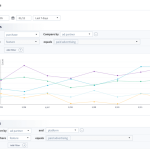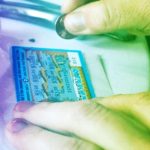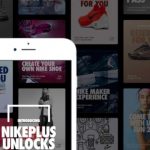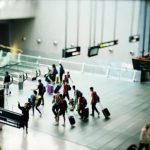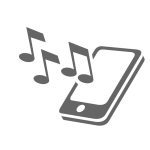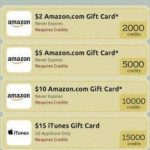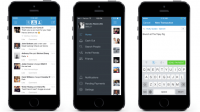Why Your Sleep App Won’t Solve Your Sleep Problems
The inability to get a proper night’s sleep used to unleash a spectacularly twisted punishment. Instead of being refreshed and rested for the new day, I woke up exhausted, groggy, and often with a pounding headache. Yet the day had to begin, and it usually required a two-cup-of-coffee minimum to get rolling. Sleep was the constant thought in the back of my mind, pestering me like a nagging relative. Then there were the 2 a.m. doldrums. An energy drink or two were required to push ahead, all the while having to resist the siren call of the couch that mocked me while I worked at my desk in my home office. At day’s end, it was time to collapse into bed, only for the cycle to repeat the next day.
At first, like any good American, I thought I’d tackle the problem myself. There’s no shortage of sleep tracking apps and trackers available. They told me much of what I already surmised: my sleep is restless and too short. But they couldn’t satisfy the answer of why.
The answer to that question required a visit to a medical specialist, who diagnosed me with sleep apnea, a condition in which one stops breathing multiple times during sleep. The brain then sends repeated, emergency wake-up signals that prevent a sound night’s sleep. This is often is accompanied by loud snoring and chronic fatigue.
While an estimated 18 million Americans have some form of sleep apnea, according to the American Sleep Apnea Association, the condition goes undiagnosed 80% of the time. The dangers extend beyond poor sleep: Apnea has been linked to obesity, heart disease, diabetes, an additional $3.4 billion in medical costs, and $16 billion in automobile collision costs.
Many who study and think about sleep see a lot of good in the increased awareness of sleep issues, thanks to all the new technology devoted to analyzing and improving it. Yet given how important sleep is for overall health, they caution that sleep is one area where you shouldn’t rely on a do-it-yourself solution.
Sleep Apps Are No Match For Sleep Apnea
The rise of wearable technology has been a boon for sleep awareness. The Apple Watch, Android Wear smartwatches, and fitness-focused wearables like those from Fitbit and Jawbone all feature some type of component devoted to tracking sleep. In essence, they attempt to use the movement-sensing and microphone capabilities in the devices to determine how restful your sleep is.
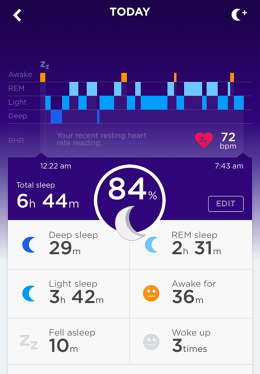
This method of activity tracking—in research circles it’s typically known as actigraphy—can provide a picture of your night and indicate if your sleep is too restless. For many, this may be enough data to offer some hints about an impending sleep problem, especially one that may be hard to detect while you’re actually trying to sleep. But doing something with that data usually requires more, according to Dr. Saqib Rashid, who specializes in sleep issues.
“We’re not basing our treatment by looking at somebody’s tracking device—it’s a starting point. That’s more for the individual who has come up to us to look for help. We are looking at our own parameters, but it’s helpful because we can do a before-and-after analysis.”
For example, diagnosing my apnea required sleeping at Rashid’s sleep center, where support staff watch the patient during the night and hook them up to more sophisticated machines that can monitor brain waves and other health data. It’s far more comprehensive than anything you can get right now out of a smartphone or wearable. (The treatment isn’t cheap though: If your insurance doesn’t cover it, one session can cost between $600 and $6,000.)
When one undergoes a formal sleep study, known as a polysomnography, doctors are able to access data that you can’t get from a wrist-worn wearable, like oxygen intake and brain activity. For example, in most studies, the patient is hooked up to an electroencephalogram, or EEG, which monitors brain wave activity. The brain goes through several different phases of sleep during the night, which are critical for proper rest. Sleep apnea disrupts this condition, and often limits the oxygen the brain receives during the night.
The current industry is charging ahead in the direction of wearable devices, with “amplified connectivity” on track to be the norm by 2025, according to a Pew Research Center report. By 2019, the wearables industry is projected to hit $19 billion in value, with 200 million available wearable devices by companies like Nike, Fitbit, Apple, and Jawbone, according to International Data Corporation—nearly all of them able to natively track sleep or talk to an app that does it.
Still, that won’t necessarily mean better diagnosis of sleep problems to begin with, according to Mariana G. Figueiro, PhD, who studies the impact of light on sleep as director of the Lighting Research Center.
The bulk of her research is into the impact of smartphones and other electronics on sleep, which has been a growing problem, given how many hours American spend staring at screens—including those devoted, ironically perhaps, to sleep data. Dr. Figueiro says that there is some merit to be found in the data that one can collect from these apps, but it should be treated more like a starting point for further study if someone is having sleeping problems.
“It gives you a big picture, but I wouldn’t do a full analysis based on these devices if you really want to understand your sleep or have more significant problems,” she says.
Data—If It’s Correct—Is Just The Beginning
She cited an example in which some patients may kick in their sleep. Depending upon where the device is located, this may not be picked up by the sensors. Or the sensor may be able to pick up body movement, but it’s not yet able to tell you exactly what that movement is.
Frustration and confusion among sleepless wearable users occasionally rears its head on user forums and in product reviews. When Dr. Chris Winter, a sleep specialist, recently conducted , he noted a number of accuracy issues. For instance, the FitBit erroneously detected a small segment of deep sleep as being an awakening, and noted that “the results of the Jawbone bear little resemblance to my actual night of sleep.”
Mimi Huggins, a spokesperson for Jawbone, says the information from the company’s wearables can serve as a valuable first level of information for those who want to find out more about their sleep patterns.
“UP3 and UP4 are built on an advanced bioimpedance platform, which measures heart rate throughout the night. Using that technology, the trackers can measure more advanced sleep stages including REM, Deep, Light, and Wake,” she says.
(This week, the company clarified that, despite reports, it isn’t done making wearables.)
A 2015 study of consumer sleep trackers by health and design researchers at the University of Washington found upsides to such apps and devices, which can “help raise awareness of the importance of sleep in the consciousness of the consumer.” But, it noted, these technologies often lack validation studies or FDA approval for their claims of improved sleep, and “may unintentionally disrupt sleep through discomfort, introduction of inadvertent noise or light, or inappropriate use of ‘smart alarms.'”
Figueiro emphasizes that anyone who is trying to better understand their sleep should use sleep track information only as part of an overall approach, one that must include an understanding the role of light on sleep.
“Light has an acute alert affect, it’s like a cup of coffee for the brain,” she says. “During the daytime the right amount of light can help you minimize that feeling of sleepiness by giving you that kick in the brain.”
All this light, especially at nighttime, explains why so many are not sleeping as well as they should, she argued. Apps like Fl.ux and features like Apple’s Night Shift are an attempt to reduce this problem. But Figueiro says that just turning on this feature, which reduces the blue light emitted from the screen, isn’t enough to reduce the impact of light on your brain. You should turn down the brightness as much as possible, and if possible use apps that turn the background black and text white. “It doesn’t have to be blue light” that keeps you awake, she adds. “Red light also has an alerting effect.”
Such advice is helpful for effective sleep performance, but it won’t be enough if you have a sleep disorder. That’s the situation I was in, and without any outside assistance, no amount of consumer hardware is ready to tackle this problem.
To remedy my apnea, I now use a CPAP, or continuous positive airway pressure machine, while I sleep. Though CPAPs can cost thousands more than a consumer sleep device—mine, a Phillips DreamStation, was subsidized by insurance—it has transformed my sleep and overall well-being. It’s not an exaggeration to say my professional treatment was life changing. I’m no longer exhausted throughout the day, and I don’t wake up with a sore throat and out of breath. Sleep is no longer an elusive dream that’s never achieved.
Still, Rashid is confident that a future of more detailed personal sleep analysis isn’t far off. Testing for sleep apnea can already be done at home under the guidance of a doctor, but Rashid believes that in the coming years, polysomnographic testing may be more widely available and easier to use, with patients able to generate more intimate data themselves through sophisticated devices that could collect the data in their own beds.
One glimmer of that future is found in new, more sophisticated trackers like those made by SleepImage and 2breathe, which use small breathing sensors that attach to the chest during sleep. They also can also view incidents of snoring, sleep stages, and other interruptions, much as you would find from a traditional polysomnography.
“The current process is, patients come to us to tell them what’s wrong,” he says. “In the future, the patients are going to come to us because the gadgets are going to predict what may be happening. Those devices will be able to pick up the biomedical changes and give us even greater insight to the problems.”
Related Video: WE PUT FastCo Employees TO THE TEST IN A SLEEP-DEPRIVATION OBSTACLE COURSE
Fast Company , Read Full Story
(55)

